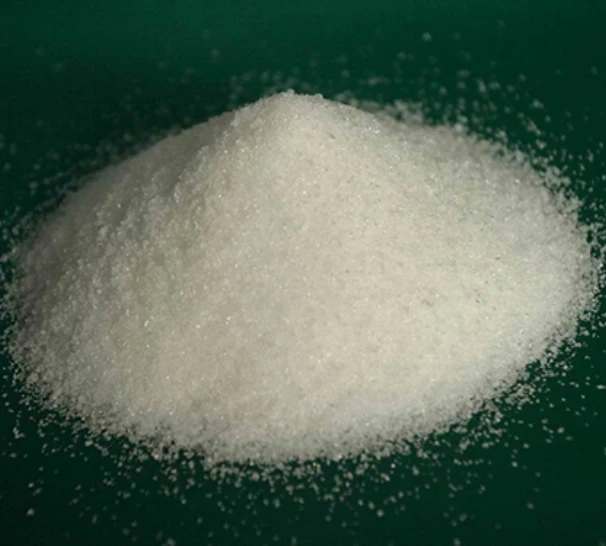Flocculation Chemicals for Enhanced Water Treatment and Wastewater Management Solutions
Understanding Flocculation and Its Chemical Agents
Flocculation is a critical process in various industries, particularly in water treatment, paper manufacturing, and food processing, where it plays a vital role in separating suspended particles from liquids. The term flocculation refers to the aggregation of fine particulates into a floc, which allows for their easier removal from a suspension. This process can occur spontaneously, but it is often enhanced through the use of specific chemical agents known as flocculants.
The Importance of Flocculation
In water treatment, flocculation is essential for purifying drinking water, treating wastewater, and processing industrial effluents. During this process, tiny particles, including silt, clay, organic matter, and microorganisms, are agglomerated into larger, more easily removable flocs. The efficient removal of these particles is crucial for achieving regulatory compliance and ensuring public health and safety.
In industrial applications, such as paper manufacturing, flocculation helps in the efficient removal of fiber and filler residues, improving the quality of the final product. Similarly, in food processing, flocculation aids in clarifying juices and removing impurities from edible oils, contributing to the overall quality and safety of food products.
Types of Flocculants
Flocculants can be broadly classified into three categories organic, inorganic, and natural flocculants.
1. Organic Flocculants These are synthetic polymers that are widely used due to their high efficiency and versatility. Common examples include polyacrylamides, which can be tailored to meet specific application requirements. Organic flocculants are particularly effective in removing suspended solids and can operate efficiently over a wide range of pH levels.
2. Inorganic Flocculants These include metal salts, such as aluminum sulfate (alum) and ferric chloride. Inorganic flocculants work by neutralizing the charge on suspended particles, which allows them to aggregate and settle out of the water. While effective, inorganic flocculants can produce sludge that requires careful management.
flocculation chemicals

3. Natural Flocculants Derived from organic sources, natural flocculants include substances like chitosan (from shellfish), starch derivatives, and plant extracts. They are gaining popularity as eco-friendly alternatives to synthetic flocculants, as they tend to have lower environmental impacts and are biodegradable.
Mechanism of Action
The flocculation process usually involves three key stages charge neutralization, particle aggregation, and sedimentation. Initially, flocculants neutralize the charges of suspended particles, which are often negatively charged due to the presence of organic and inorganic materials. As the charges are neutralized, particles begin to collide and aggregate into larger flocs, which will eventually settle under the force of gravity.
The effectiveness of flocculation is influenced by various factors, including the type and concentration of flocculants used, pH levels, temperature, and the characteristics of the suspended particles. Optimizing these conditions is crucial to achieving maximum flocculation efficiency.
Challenges and Considerations
Despite its benefits, the flocculation process does come with challenges. The selection of flocculants must consider the specific characteristics of the water or slurry being treated. Overdosing flocculants can lead to complications such as excessive sludge production and potential chemical residues in the treated water.
Furthermore, regulatory frameworks may dictate the allowable limits of certain chemicals in wastewater discharge. As such, industries must continually balance efficacy with environmental considerations to adhere to safety standards.
Conclusion
Flocculation is a vital process across various sectors, enhancing the quality and safety of water, food, and industrial products. Understanding the different types of flocculants and their mechanisms enables industries to optimize their operations while mitigating potential environmental impacts. In an era where sustainability is increasingly prioritized, the ongoing development of eco-friendly flocculation agents will play a pivotal role in shaping the future of efficient and responsible resource management.
-
lk-319-special-scale-and-corrosion-inhibitor-for-steel-plants-advanced-solutions-for-industrial-water-systemsNewsAug.22,2025
-
flocculant-water-treatment-essential-chemical-solutions-for-purification-processesNewsAug.22,2025
-
isothiazolinones-versatile-microbial-control-agents-for-industrial-and-consumer-applicationsNewsAug.22,2025
-
scale-inhibitor-key-solutions-for-water-system-scale-preventionNewsAug.22,2025
-
organophosphonates-versatile-scale-inhibitors-for-industrial-water-systemsNewsAug.22,2025
-
scale-and-corrosion-inhibitor-essential-chemical-solutions-for-water-system-maintenanceNewsAug.22,2025





